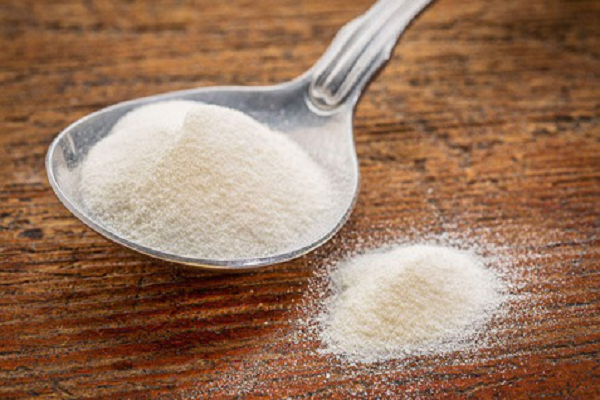Cause Analysis First, unfavorable temperatures are the main cause of poor coloration in tomato fruits. The tomato prefers a cool and dry climate. The temperature difference between the day and night of the growing period is greater. The lower the night temperature is, the earlier the floral buds differentiate. The lower the first inflorescence, the lower the number of flowers. The temperature requirements of tomatoes vary with each growth period. The optimum temperature for germination is 28°C to 30°C, and it is not easy to germinate when the temperature is lower than 10°C or higher than 40°C. 15 °C ~ 30 °C flowering period is appropriate, below 15 °C or higher than 35 °C, poor flower development and affect the results. The fruit coloring was best when the temperature was between 18°C ​​and 26°C. When the daily temperature was above 32°C, the fruit growth and ripening were fast, and the formation of lycopene was obstructed to affect the coloration. When the temperature is too low, it will also seriously affect the coloring of the fruit. If the insulation effect of the greenhouse is not good, it cannot be normally colored when the temperature of the greenhouse is lower than 12°C. Second, improper management of fertilizers and water can also affect the normal color transformation. In the case of planting water, the first fruit is generally not top-fertilized and watered before sitting on it. If the soil is too dry, it can be poured on sunny mornings. Topdressing watering should be carried out in the sunny morning. After watering, the greenhouse should be closed and the temperature should be increased after the temperature rises. When the second ear fruit is inflated, it is top-dressed again and the amount of fat is the same for the first time. The tomato fruit is poured once every 7 to 10 days for the fruit's swelling period, and the amount of water should be even. Again, there was no timely cleaning of the shed film and removal of old leafy leaves, resulting in poor coloration of the tomatoes. When the tomato fruit is basically long enough, the lower leaves can be removed, and diseased leaves must be removed in time to increase the ventilation and light transmission, and promote the normal coloring of the fruit. solution According to the above reasons, the various farm managements can be correspondingly strengthened to create good environmental conditions for normal coloring of tomatoes. In particular, after entering the number nine cold winter, the tomatoes could not turn red due to the temperature not meeting the requirements for lycopene production, and reding the drug before picking is an effective measure to promote the early listing of tomatoes. However, in the actual red-blowing process, the growth of plants is often inhibited due to improper handling, and some have also appeared phytotoxicity. Therefore, the following issues should be noted when using pharmaceuticals for redness: (1) Red should not be premature. In general, redness is best when the fruit is fully grown. If the fruit is still in the mature period, not fully grown up, eager to urge red prone to uneven coloring of the phenomenon of stagnation. (2) The concentration of the drug should not be too high. Most tomato reds use 40% ethephon, 4 kg per 50 ml of ethephon plus water and mix well before use. If the concentration of the liquid is too high, the leaves of the plant's base will be damaged, causing the leaves to yellow and produce obvious symptoms of drug damage. (3) The number of red fruit per plant should not be too much. The red fruit per plant is generally 1 to 2 at a time. Because a single plant has too much red fruit at one time, the plant is susceptible to phytotoxicity when the dose is too large. (4) The liquid should not be contaminated with leaves. If the liquid is contaminated by the leaves, it will cause the leaves to yellow. The specific practice of redness is: use a small piece of sponge to dip the liquid and smear the surface of the fruit; you can also wear cotton gloves to dip the liquid and spread the surface of the fruit.
Collagen is a triple helical protein which can be considered as the bio-glue inside our body; in fact, animal glue can be obtained by boiling the animal skin. Collagen, a major component of connective tissues, exits in the extracellular space of these tissues which are the key reinforcing and bonding materials for all tissues and organs throughout our body, forming rigid structures as such bone, semi-rigid tissues such as cartilage, or soft tissues such as muscle, tendon, skin, ligaments, and cell membranes, etc. There are different forms (fibrillar and non- fibrillar) and types of collagens in the body; Type 1 being the major type constitutes over 90% in our body and is the major component in skin, tendon, vascular ligature, organs, bone (main component of the organic part of bone). Because collagen is an essential building material of all tissues and organs, it has many medical uses, such as in cardiac (hear) applications, cosmetic surgery, bone grafts, tissue regeneration, reconstructive surgical uses, and wound healing care.
Collagen is created inside fibroblast cells, and this process is needed to support the creation and repair of the body`s connective tissues. However, the biological process starts to breakdown when we are aging, normally after we reach the age of late 20s or early 30s. Because collagen from natural sources such as animal, fish scales or plant contain essentially the same amino acid compositions (glycine, proline, alanine, hydroxyproline, glutamic acid, arginine, aspartic acid, serine, lysine, leucine, valine, threonine, phenylalanine, isoleucine, etc.) as human collagen, supplement the body with the natural collagen, either by dermal application or through oral ingestion, can help rejuvenate collagen creation process to support the repairing of aging connective tissues in our body, particularly those in our skin, and to reverse or slow down the aging process for a more youthful appearance.
Collagen Hydrolyzed Collagen,Fish Collagen,Collagen Food,Collagen Cosmetic Nanjing Sunshine Biotech Co., Ltd , https://www.sunshine-bio.com
